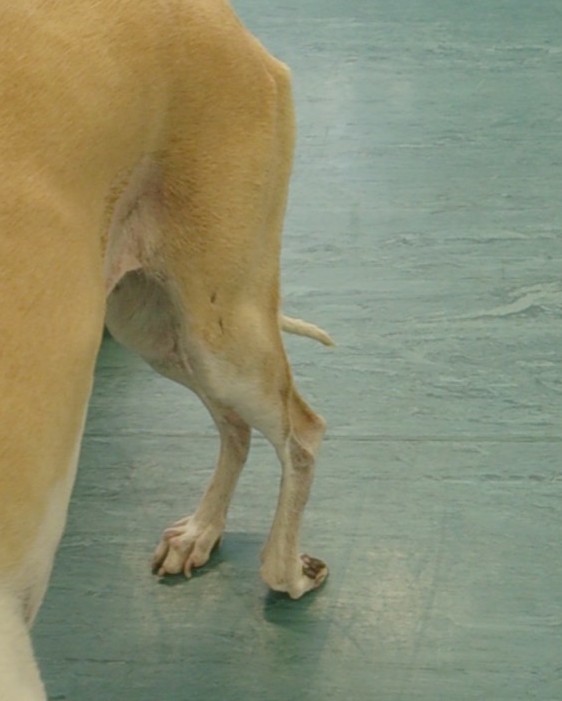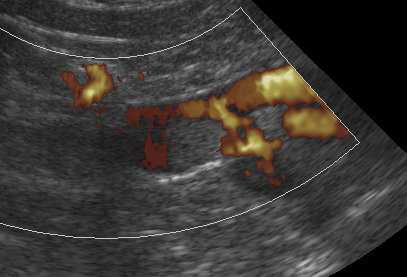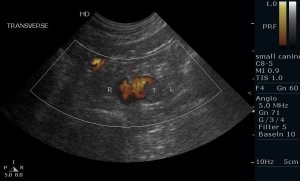CATE who?
We’ve all seen cats with ‘feline arterial thromboembolism’ -usually of the terminal aorta. Although renal infarcts are increasingly recognised in cats with cardiomyopathy and other organs may also be affected.
In dogs it’s obviously less common. In my experience they tend to be unilateral which makes it easier to mistake them for musculoskeletal injuries. That might just be a size thing -it would take a really big clot to obstruct both external iliac arteries in a dog.
There are other differences in the natural history of CATE compared to FATE. In dogs potential underlying causes include hypothyroidism, hyperadrenocorticism and neoplasia. Many affected cases grumble on for months -the thrombi may wax and wane, sometimes filling a remarkable extent of aorta. They tend to be less dramatic than the feline equivalent. Unless infective endocarditis is the precipitating cause -in which case the prognosis is poor.
So, our patient pictured above has a terminal aorta looking like this:
and with power Doppler:
and the transverse view:
This particular case was caused by underlying hypothyroidism and eventually responded well to levothyroxine and clopidogrel.









